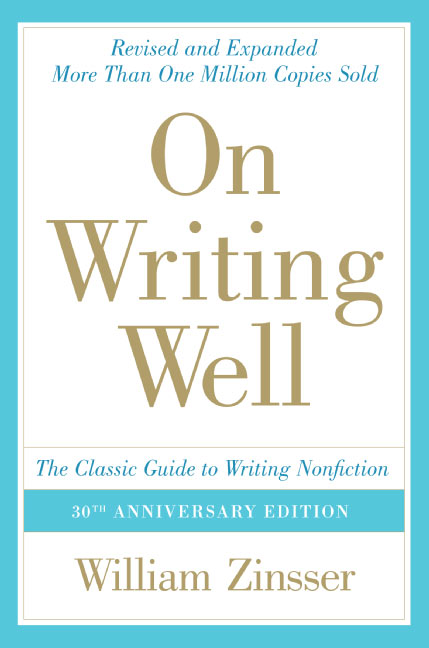Dear WordCount: What aspects of William Zinsser’s book, On Writing Well, are relevant to scientific writing? — S. Saeed
Dear S:
Thanks for asking about one of my all-time favorite books on journalism and writing. Although it’s been around for more than three decades, On Writing Well is still relevant as a reference for what to do and what to avoid in many forms of nonfiction: newspaper and magazine articles, travel, sports and humor writing, criticism, memoir, even memos, newsletters and emails you may need to produce for work.
The book – at least the edition I own – includes an entire chapter on writing about science and technology. Zinsser’s advice boils down to this: Make sure you have a firm grasp on how a scientific process or technology that you’re trying to explain works or you’ll never be able to dissect it for readers. Or as Zinsser puts it: “Writing is thinking on paper.”
Here’s what else he suggests when writing about science, technology or other complex topics:
1. Use plain language. You don’t need to talk down to people, but you don’t need to throw in arcane jargon or lots of acronyms to impress them with what you know.
2. Write in a logical sequence of events. If you’re explaining how a nuclear reactor works, or how Apple manufactures the new iPhone 5, take readers through step by step, from start to finish. “This is no place for fanciful leaps or implied truths. Fact and deduction are the ruling family,” Zinsser says.
3. Assume nothing. Start with the assumption that your readers don’t know anything about the subject you’re writing about. Then take them through the same steps or sequence you went through to learn about it yourself, Zinsser says.
4. Turn the inverted pyramid upside down. Instead of starting with the usual who, what, why, where and when, flip that old inverted pyramid on its head and begin by discussing the one thing readers absolutely need to know in order to start learning about the subject. Then move into the next fact, and the next.
5. Look for the human element. Use people to personalize a topic. Weave a story of an invention or new bit of software code around the scientist or developer who created it. Sometimes adding a human element means writing about your own experience using or learning something – think David Pogue’s tech columns for the New York Times or Walt Mossberg’s for All Things D.
6. Use comparisons and other imagery. If you’re explaining concepts or processes that are new, intricate or just difficult to describe, compare them to something that readers already know, or use other imagery to help them understand.
7. Be yourself. “Write like a person and not like a scientist,” Zinsser says. “Just because you’re dealing with a scholarly discipline that’s usually reported in a style of dry pedantry is no reason why you shouldn’t write in good fresh English.” And if you love what you’re writing about – whether it’s black holes or bits and bytes – all the better. If you enjoy yourself, your writing will be enjoyable.
Got your own words of wisdom on writing about science or technology? Please share by leaving a comment.
Dear WordCount is a weekly advice column answering your questions about writing, blogging and running a freelance business. Send questions to wordcountfreelance@gmail.com.
